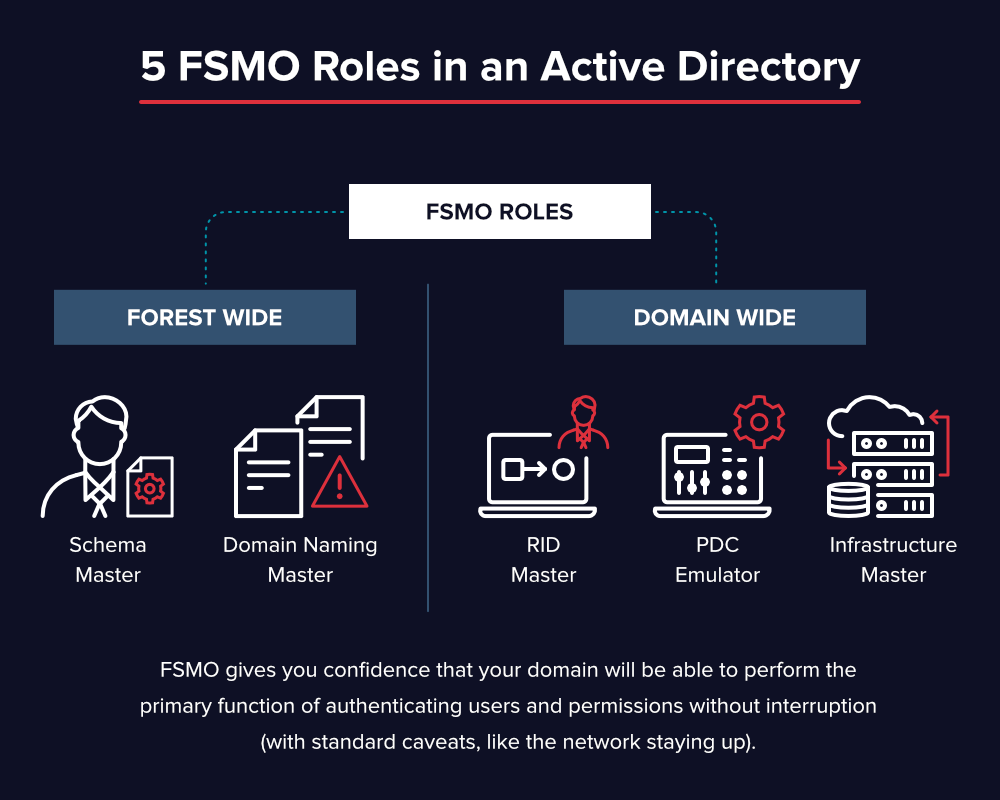What Is The Name Of A Domain Controller On Which Changes Can't Be Written?
Agile Directory (Advertizement) has been the de facto standard for enterprise domain hallmark services ever since it first appeared in late 1999 (in Windows Server 2000). In that location have been several enhancements and updates since so to make information technology the stable and secure hallmark organisation in use today.
In its infancy, Ad had some rather glaring flaws. If y'all had multiple Domain Controllers (DC) in your domain, they would fight over which DC gets to make changes – and sometimes your changes would stick, and sometimes they wouldn't. To level up Advertizing and go along the DCs from fighting all the fourth dimension, Microsoft implemented "last writer wins" – which can be a skilful thing, or it's the concluding mistake that breaks all the permissions.
Become the Free Pentesting Agile
Directory Environments e-book
Then Microsoft took a left turn at Albuquerque and introduced a "Unmarried Primary Model" for Ad. I DC that could make changes to the domain, while the rest just fulfilled authentication requests. Yet, when the single master DC goes down, no changes can be made to the domain until information technology'due south support.
To resolve that fundamental flaw, Microsoft separated the responsibilities of a DC into multiple roles. Admins distribute these roles across several DCs, and if one of those DCs goes out to lunch, another will take over whatsoever missing roles! This means domain services have intelligent clustering with built-in redundancy and resilience.
Microsoft calls this paradigm Flexible Single Principal Performance (FSMO).
FSMO Roles: What are They?
Microsoft split the responsibilities of a DC into 5 separate roles that together brand a full AD arrangement.

The 5 FSMO roles are:
- Schema Master – one per forest
- Domain Naming Master – one per forest
- Relative ID (RID) Master – one per domain
- Principal Domain Controller (PDC) Emulator – one per domain
- Infrastructure Master – one per domain
FSMO Roles: What practice They do?
Schema Master: The Schema Main function manages the read-write copy of your Active Directory schema. The Advert Schema defines all the attributes – things like employee ID, telephone number, email address, and login proper name – that yous tin employ to an object in your Advert database.
Domain Naming Master: The Domain Naming Primary makes sure that you don't create a 2nd domain in the same forest with the same proper noun as another. It is the master of your domain names. Creating new domains isn't something that happens oft, and so of all the roles, this one is most likely to live on the same DC with another role.
RID Main: The Relative ID Master assigns blocks of Security Identifiers (SID) to different DCs they can use for newly created objects. Each object in AD has an SID, and the last few digits of the SID are the Relative portion. In order to keep multiple objects from having the same SID, the RID Master grants each DC the privilege of assigning certain SIDs.
PDC Emulator: The DC with the Chief Domain Controller Emulator office is the administrative DC in the domain. The PDC Emulator responds to hallmark requests, changes passwords, and manages Group Policy Objects. And the PDC Emulator tells everyone else what time it is! It's good to be the PDC.
Infrastructure Master: The Infrastructure Master part translates Globally Unique Identifiers (GUID), SIDs, and Distinguished Names (DN) between domains. If you have multiple domains in your forest, the Infrastructure Master is the Babelfish that lives betwixt them. If the Infrastructure Master doesn't do its job correctly you will come across SIDs in identify of resolved names in your Access Control Lists (ACL).
FSMO gives you confidence that your domain will be able to perform the primary function of authenticating users and permissions without intermission (with standard caveats, like the network staying upward).
It'south important to monitor Advertising in order to forestall fauna force attacks or privilege superlative attempts – 2 common set on vectors for data theft. Want to run into how to practise information technology? We tin can show you. Get a demo to see how Varonis protects AD from both insider and external threats.

Jeff Petters
Jeff has been working on computers since his Dad brought dwelling an IBM PC 8086 with dual disk drives. Researching and writing about information security is his dream task.
What Is The Name Of A Domain Controller On Which Changes Can't Be Written?,
Source: https://www.varonis.com/blog/fsmo-roles
Posted by: andersonparpookin1962.blogspot.com


0 Response to "What Is The Name Of A Domain Controller On Which Changes Can't Be Written?"
Post a Comment